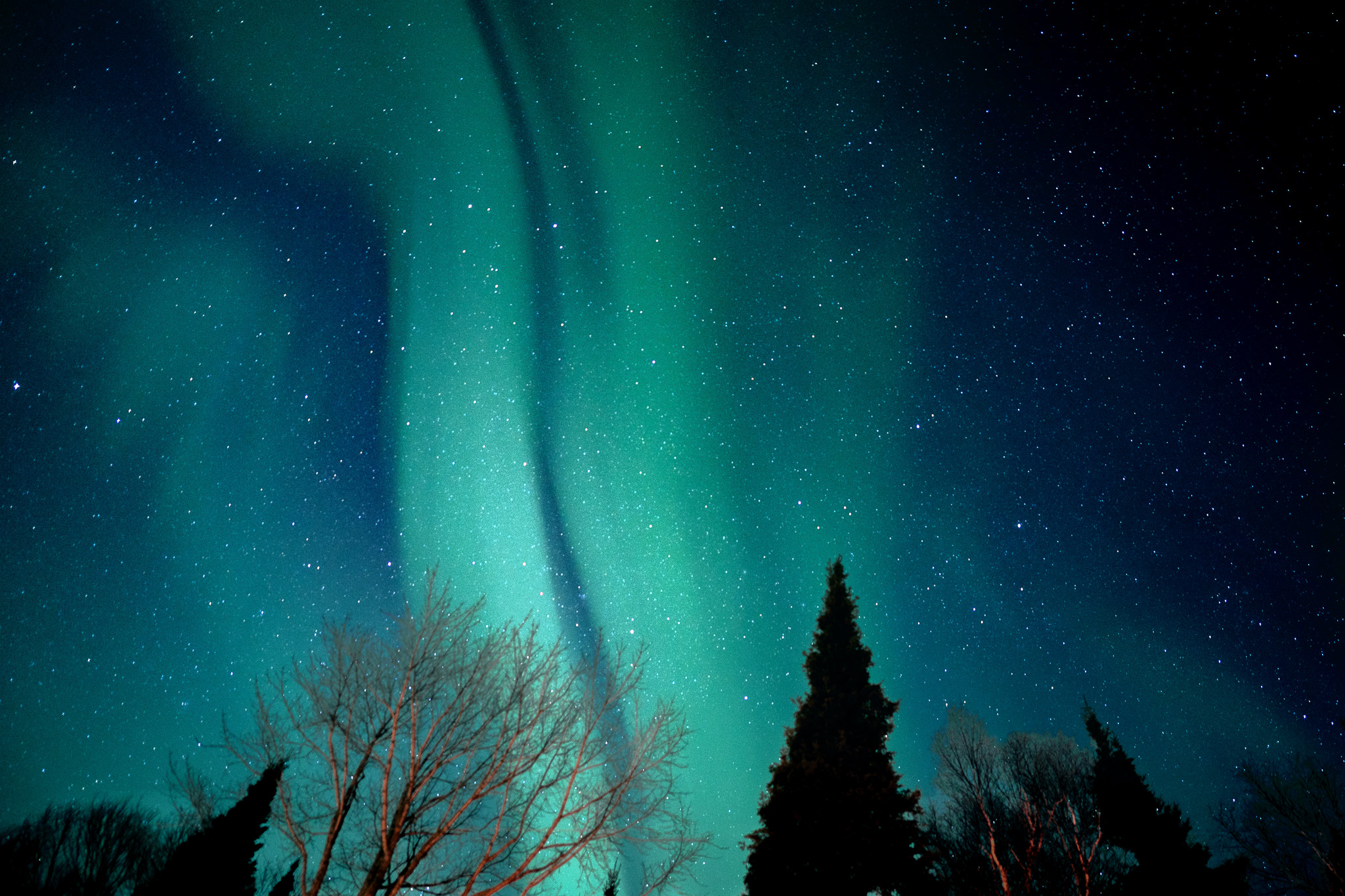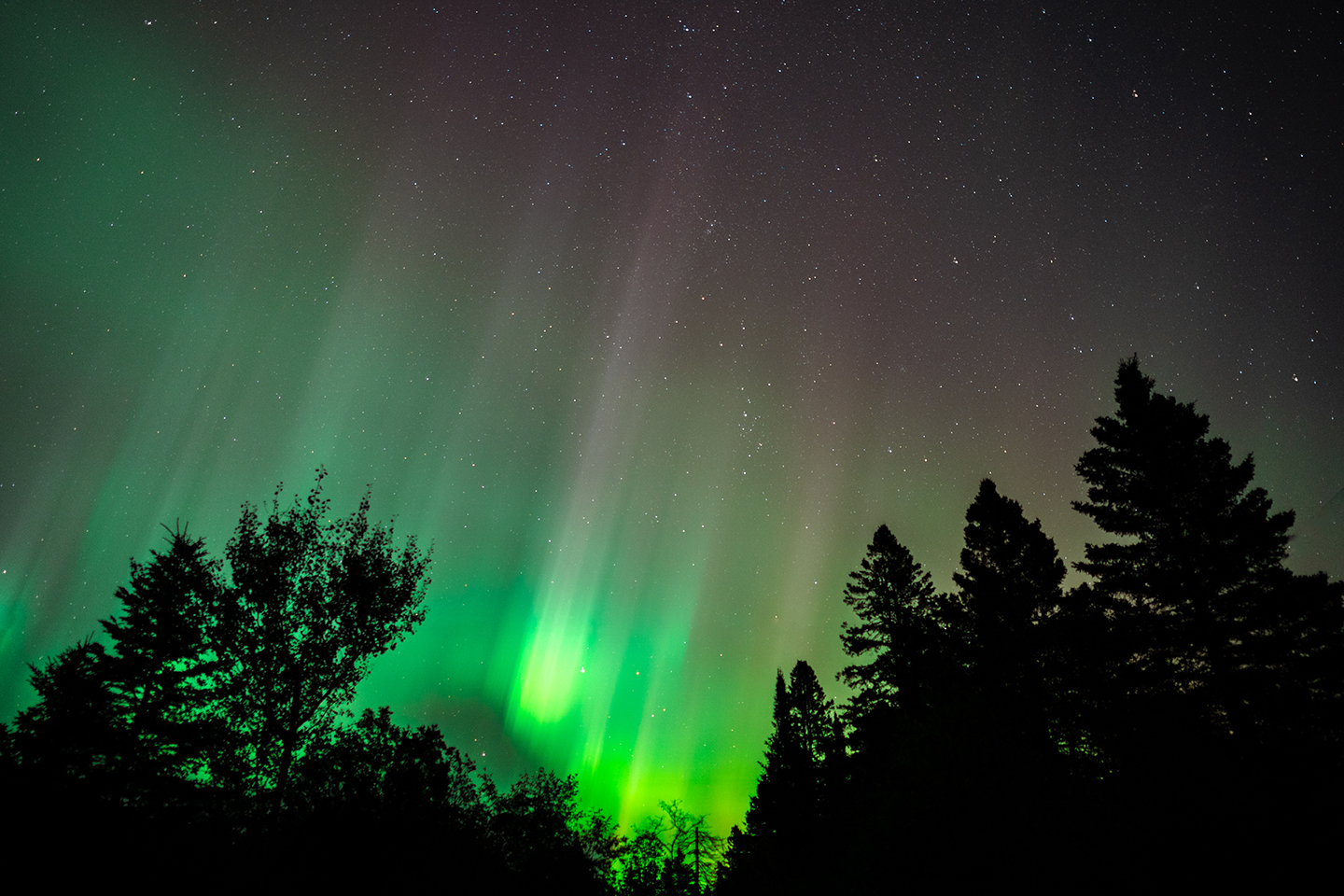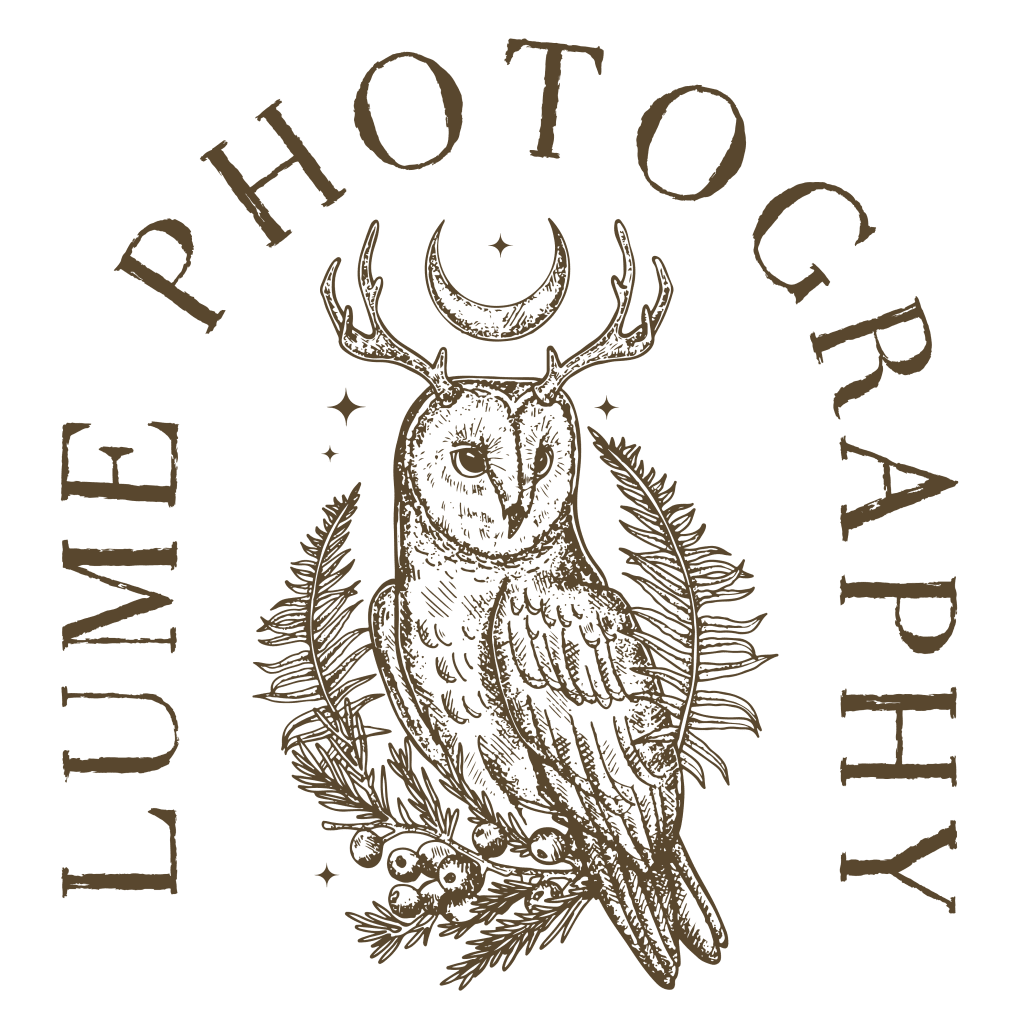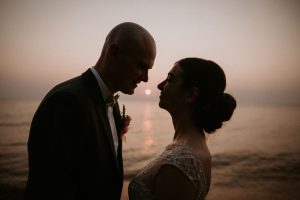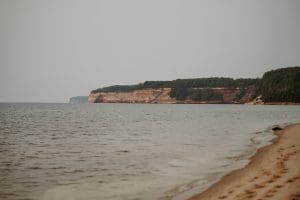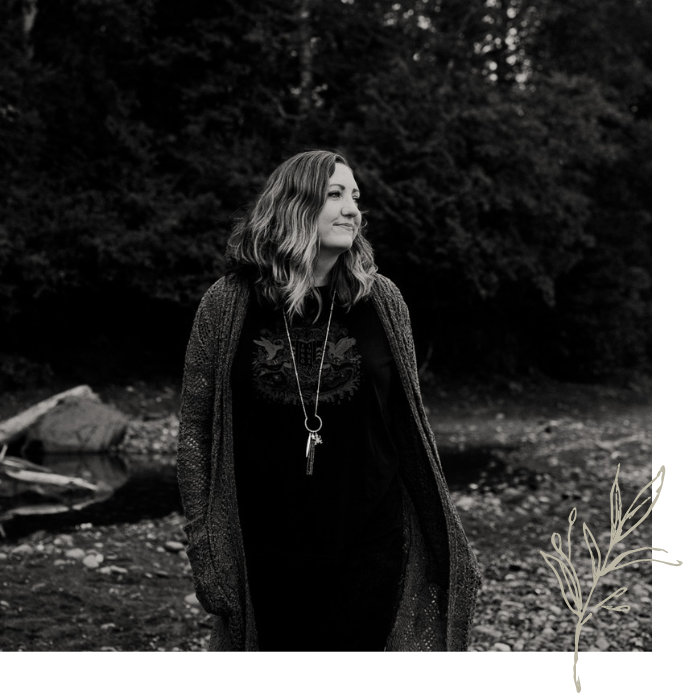Keweenaw Northern Lights Viewing & Photo Guide

If you’ve ever dreamed of witnessing the awe-inspiring dance of the northern lights, the Keweenaw Peninsula in Michigan’s Upper Peninsula is one of the best places to make that dream a reality. With its remote location, minimal light pollution, and breathtaking views over Lake Superior, the Keweenaw offers prime conditions for spotting the elusive auroras.
But seeing the northern lights is just one part of the adventure! Capturing their ethereal beauty in a photograph is an entirely different challenge—one that requires a bit of patience, the right gear, and some know-how. This guide will walk you through everything you need to know, from when and where to catch the best displays to the camera settings that will help you take stunning aurora photos. So, grab a cozy blanket, a thermos of hot cocoa, and your camera—it’s time to chase the lights!
Why the Keweenaw Peninsula?
The Keweenaw Peninsula is a hidden gem for aurora chasers. Its remote location, low light pollution, and breathtaking landscapes make it an ideal spot for witnessing the northern lights. Plus, the Keweenaw’s unique blend of rugged coastlines, dense forests, and historic sites provide incredible backdrops for your photos.
How to See the Northern Lights
The northern lights, or aurora borealis, can be elusive, but here are some tips to increase your chances of catching them:
Best Time of Year
While the auroras can technically occur year-round, the best times to see them on the Keweenaw Peninsula are from late fall to early spring. The longer, darker nights and clearer skies during these months provide prime conditions. Specifically, September to April is your best bet.
Best Time of Night
The northern lights tend to be most active between 10 PM and 2 AM. However, they can appear anytime during the night, so it’s good to keep an eye on the sky (and the aurora forecasts) throughout the evening.
Avoid the Moon
A bright moon can wash out the faint lights of the aurora, making them harder to see. To maximize your chances of seeing the northern lights in all their glory, plan your viewing on nights when the moon is new or less than half full. Check a lunar calendar to find the best nights with the least moonlight interference.
Aurora Forecasts
Speaking of forecasts, there are several tools and apps you can use to check aurora activity. Websites like SpaceWeatherLive and apps like My Aurora Forecast give you real-time updates on solar activity and predict the likelihood of auroras. Keep an eye on the Kp index – a higher Kp number means a better chance of seeing the lights. If you’re on Facebook, the group Michigan Aurora Chasers is great for getting a heads up if there’s a good chance the lights will be out.
Let Your Eyes Adjust
When you arrive at your viewing spot, give your eyes time to adjust to the darkness. It usually takes around 5 minutes for your eyes to fully adapt, allowing you to see the auroras more clearly. During this time, avoid looking at any bright lights, as they can be blinding and force your eyes to readjust to the dark. This is crucial because once your eyes are adapted, any sudden light from cars or flashlights will be overwhelmingly bright and can disrupt the experience for you and others.
Manage Your Expectations
It’s important to manage your expectations when viewing the northern lights. Often, the auroras won’t appear as the vividly bright, colorful swirls you see in photos and videos. To the naked eye, they often look more like a light, cloudy haze with occasional pillars or spikes. These subtle shifts and changes can be mesmerizing, but they’re not always the dramatic displays you might expect. What you see through your camera will not be the same as what you see with your naked eye.
Below are two photos – one is edited to look like how the sky actually looked with the naked eye, vs what my camera saw.
Finding the Perfect Spot
One of the best things about the Keweenaw Peninsula is the abundance of fantastic viewing locations. Here are a few of my favorites:
Keweenaw Mountain Lodge Dark Sky Park
The Keweenaw Mountain Lodge Dark Sky Park is a fantastic spot for aurora viewing. Designated as a dark sky park, this location offers some of the darkest skies in the region, making it perfect for seeing and photographing the northern lights.
Brockway Mountain Drive
This scenic drive offers some of the highest points on the Keweenaw Peninsula, providing a wide-open view of the northern sky. It’s easily accessible in warmer months but during winter the road is closed to traffic.
Copper Harbor
The northernmost point of the peninsula, Copper Harbor, is a fantastic spot for aurora viewing. Head to the marina or one of the nearby beaches like the ones at Hunter’s Point Park for unobstructed views over Lake Superior.
Great Sand Bay
Located between Eagle River and Eagle Harbor, the Great Sand Bay offers stunning lake views and plenty of open space for setting up your camera. The shoreline is perfect for capturing the northern lights dancing over the water.
Cliff Mine
For a more secluded and historically rich experience, try the Cliff Mine. This site, once a bustling copper mine, now offers a serene and atmospheric setting for aurora viewing. The remnants of the old mining structures and the surrounding landscape create a unique and hauntingly beautiful backdrop for capturing the northern lights.
Aurora Etiquette: Respecting the Magic
When heading out to view and photograph the northern lights, it’s important to be considerate of others who are also trying to enjoy the experience. Here are some tips on aurora etiquette to keep in mind:
Keep Headlights Off
When you’re approaching popular viewing spots, turn off your headlights as you get closer. Bright lights can ruin the night vision of those already there and disrupt their viewing experience. Use your parking lights or low beams if absolutely necessary, but avoid shining bright lights directly at people.
Use Red Lamps
White light can be harsh and disrupt your night vision as well as that of others. Instead, use flashlights, lanterns, or headlamps with a red light mode. Red light is less intrusive and helps maintain night vision, allowing everyone to see the auroras more clearly. These are the headlamps I use.
Keep Noise Down
The tranquility of the night is part of the magic. Keep your voice low and avoid making unnecessary noise. This creates a peaceful environment where everyone can fully immerse themselves in the beauty of the northern lights. Plus, if you’re lucky, you might get to hear them! That’s right, sometimes the lights crackle or buzz.
Be Mindful of Space
Give others their space. Avoid setting up your gear too close to someone else, as this can interfere with their experience and their photos. Respect personal space and the effort others have put into finding their perfect spot.
Pack Out What You Pack In
Respect nature and the viewing sites by leaving no trace. Pack out all your trash and belongings, and leave the area as pristine as you found it. This ensures that everyone can enjoy these beautiful spots for years to come.
Respect Private Property
Stick to public areas or places where you have permission to be. Respect private property and avoid trespassing. Many of the best spots are on public land, so there’s no need to encroach on private spaces.
By following these simple etiquette guidelines, you can ensure a magical and respectful experience for yourself and everyone else out there chasing the northern lights. Let’s all do our part to keep the Keweenaw Peninsula a pristine and welcoming place for aurora enthusiasts.
Gear Up: What You Need to Photograph the Northern Lights
Photographing the northern lights can be a bit tricky, but with the right gear and settings, you’ll be able to capture some incredible shots. Here’s what you’ll need, whether you’re using a camera or your cell phone:
Cameras and Lenses
DSLR or Mirrorless Camera
A DSLR or mirrorless camera with manual settings is ideal. These cameras allow you to adjust the exposure, aperture, and ISO, giving you more control over your shots.
A wide-angle lens with a fast aperture (f/2.8 or lower) is perfect. The wide-angle captures more of the sky, and the fast aperture lets in more light, essential for low-light conditions.
Cell Phone
Cell phones have come a long way, and many now have excellent low-light capabilities. While they may not match the quality of a DSLR or mirrorless camera, you can still get some stunning shots of the auroras with the right techniques.
Stabilization
Tripod: A sturdy tripod is a must for both cameras and cell phones. Long exposure times are needed to capture the auroras, and any camera movement will result in blurry photos.
Remote Shutter Release or Self-Timer: A remote shutter release or setting a timer helps reduce camera shake and allows you to take long exposures without touching the camera or phone. You can also use a voice-activated shutter on your phone.
Camera and Cell Phone Settings for Capturing the Northern Lights
Now that you’ve got your gear, let’s talk settings. Here are some general guidelines to get you started:
DSLR or Mirrorless Camera Settings
Screen Brightness
Turn your screen brightness all the way down.
ISO
Start with an ISO of 800. You may need to adjust depending on the brightness of the auroras and the light conditions.
Aperture
Set your aperture to its widest setting (lowest f-number). This lets in the most light and helps capture the vibrant colors of the auroras.
Shutter Speed
A good starting point is a shutter speed of 10 to 20 seconds. Or you can try the 500 rule: divide 500 by the focal length of your lens. For example, if you’re using a 24mm lens, it means you should be able to use a shutter speed of 20-21 seconds (500/24). If your photo is too bright, try reducing the shutter speed. If your photo is too dark, try a longer shutter speed.
Focus
Manually set the focus of your lens to infinity. To ensure sharp focus, use live view and zoom in on a bright star or planet. If you are taking photos over an extended period, periodically check your focus by zooming in and make adjustments as needed.
Cell Phone Settings
Use a Night Mode
Many modern cell phones have a night mode or long exposure mode. Enable this feature to capture more light and detail.
ISO and Shutter Speed
If your phone allows manual control (through built-in settings or a third-party app), set the ISO to 800 and the shutter speed to 10-20 seconds, similar to a DSLR.
Focus
If you can, manually set the focus to infinity. Some cell phone apps allow you to do this, ensuring sharp images. If not, try focusing on a bright star or planet.
Tips for Amazing Northern Lights Photos
Scout Your Location
Arrive at your chosen spot before it gets dark. This allows you to scout the area, find interesting foreground elements, and set up your gear.
Prepare in Advance
Get most of your camera or phone settings prepared before you head out into the dark so you don’t have to worry about looking at screens to try to figure everything out as your eyes adjust.
Composition
Incorporate foreground elements like trees, rocks, or buildings to add depth and interest to your photos. Experiment with different compositions to find what works best.
Keep Shooting
The auroras can change quickly, so keep shooting! Take multiple shots with different settings to increase your chances of getting that perfect photo.
Be Patient
Photographing the northern lights requires patience. The auroras may come and go, so be prepared to wait. Enjoy the experience and the beauty of the night sky.
Post-Processing
After your night out, spend some time editing your photos. Adjust the exposure, contrast, saturation, and white balance to bring out the best in your images. Software like Adobe Lightroom or Photoshop can help you fine-tune your photos. For cell phone photos, apps like Snapseed or Adobe Lightroom Mobile are great for post-processing on the go.
Embrace the Experience
While capturing the northern lights on camera or your cell phone is incredible, don’t forget to take a moment to simply enjoy the experience. The magic of the auroras dancing in the night sky is something you’ll remember forever. Whether you’re watching from a secluded beach, a mountaintop, or from inside your car, let yourself be mesmerized by nature’s light show.
Final Thoughts
The Keweenaw Peninsula is a truly magical place, and witnessing the northern lights here is an unforgettable experience. With the right preparation, gear, and a bit of patience, you’ll be able to capture breathtaking photos of this natural wonder. So, what are you waiting for? Grab your camera or cell phone, head to the Keweenaw, and let the magic of the northern lights light up your night. Happy aurora chasing!
Hi I’m Andrea.
Photographer, elopement planner, nature-dweller, storyteller. I work with people who care more about presence than perfection. This space is where I share what I’ve learned from over a decade of guiding couples through wild places, emotional days, and big choices. It’s not just logistics- it’s about tuning in, slowing down, and making space for something real.
If you’re looking for more info:
→ More About What I Do + The Experience
→ Browse the Resource Library
If you’re ready to talk about your day…

